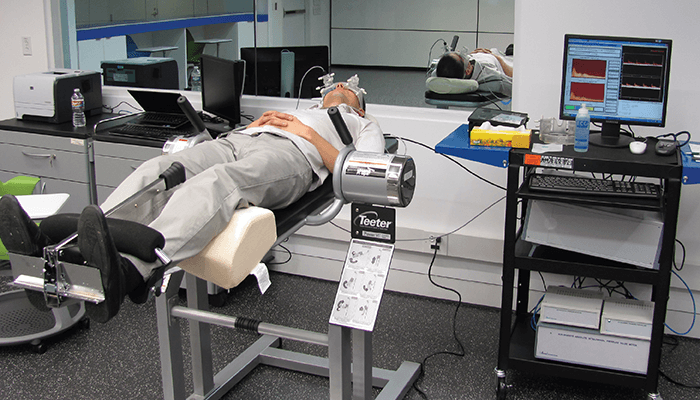 Two depth TCD technology at the DLR center, Cologne
Two depth TCD technology at the DLR center, Cologne
In a recent article, we covered new research from the Kaunas University of Technology that has identified translaminar pressure difference and lowered intracranial pressure as possible risk factors for normal tension glaucoma. In this follow-up article, we speak to Arminas Ragauskas – the developer of the two depth Transcranial Doppler technology that enabled researchers to non-invasively measure the intracranial pressures of patients.
How did the development of the two depth transcranial Doppler come about?
The only technologies that are clinically available for intracranial pressure (ICP) monitoring are invasive. There is a growing demand for non-invasive ICP measurement and monitoring technologies in wider fields of medicine outside of neurosurgical intensive care units. Unfortunately, other proposed non-invasive technologies are still unable to measure ICP value in pressure units without the calibration of a system – something that is needed to eliminate systematic errors of proposed non-invasive methods. Such calibration is impossible because a “gold standard” non-invasive ICP meter needed for calibration does not exist.
How does this new technology differentiate itself?
Our two depth transcranial Doppler (TCD) technology works by applying external pressure to a closed eyelid and taking simultaneous measurements of blood flow velocities in intracranial and extracranial (orbital) segments of the ophthalmic artery (OA). The value of extracranial pressure is almost equal to ICP value in a pressure balance case when blood flow velocities in both OA segments are the same. Our patented pressure balance method is the only method that does not require calibration but still produces accurate and precise ICP measurements outside of neurosurgical ICU.
Our software solution is able to identify – for the first time – very small intracranial pressure and intracranial compliance changes using automatic analysis of recorded pulse wave morphology. To accurately diagnose glaucoma, it is important to capture extremely high resolution small changes in the brain’s physical parameters – our technology demonstrates this, providing high resolution results for traumatic brain injuries, stroke patients, and brain tumor neurosurgery patients included in our comparative study.
What does this technology mean for the future of measuring intracranial pressure?
I believe that our patented, non-invasive ICP technologies will be used as widely as non-invasive blood pressure measurement in the near future. We also believe that our technologies will help create much more effective methods to treat glaucoma than currently available methods.
Are there any ways the technology could be improved?
Yes, of course. This product will continue to be developed as a radical innovation in the global market. That said, the preliminary results of a prospective comparative invasive and non-invasive clinical study of our passive, disposable, and non-invasive sensor already showed that the correlation between invasive and non-invasive recorded intracranial pressure pulse waves is between 0.97 and 0.99. Such high correlation means that a very strong association exists between physiological and pathological ICP pulse waves and our non-invasively recorded electrical signal in an output of a pressure sensor.
Can this technology realistically be implemented in clinical settings?
The latest version of our technology is already in clinical practice! We are using it to examine different brain pathologies, including those of glaucoma patients.
